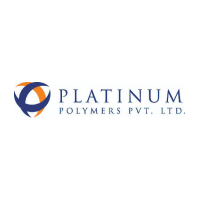Merchandise Exports From India Scheme (MEIS)
GET EXPERT CONSULTATION
Merchandise Exports From India Scheme (MEIS)
MEIS was launched as part of the Foreign Trade Policy (FTP) for the period 2015-2020. The MEIS was created as an incentive program to encourage exports of products. The incentives are provided through duty credit credits to exporters. The MEIS is announced to the DGFT (Directorate General of Foreign Trade) and is implemented through the Ministry of Commerce and Industry.
Table of Content
- What is MEIS?
- MEIS Objective
- Benefits of MEIS
- MEIS Incentive
- MEIS Incentive
- Eligibility for MEIS
- Documents Required for MEIS Application
- MEIS Application Filing Procedure
- MEIS Registration Fees
- Export categories not eligible under MEIS
- Conclusion
- Frequently Asked Questions (FAQs)

What is MEIS?
The primary goal of the MEIS scheme in India was to encourage the production and export of specified goods and products. This MEIS award was determined based solely on Free on Board (FOB) value of INR 5 lakh if exports are worth higher than INR 5 lakhs per shipment. In this program duty credit scrips, which are awarded to exporters in the form of awards can be transferred freely and used to fulfill the following purposes:
• Setting the basic Customs Duty and the Additional Customs Duty as per sections 3(1), 3(3) as well as 3(5) of the Customs Tariff Act, 1975 for the import of various goods, including capital goods and inputs, according to the department of revenue notification other than those in Appendix 3A.
• Covering the Central excise duties on domestic purchase of inputs or products.
MEIS Objective
The goal of the Merchandise Exports from India Scheme (MEIS) is to compensate for the inefficiencies in infrastructure and the expenses associated with the export of goods and products made or produced in India, particularly products with high levels of export efficiency and employment potential, and to increase India’s competitiveness on the global market.
Benefits of MEIS
Credit scrips for duty can be used to pay customs duty on imports of inputs or products, including anti-dumping duties and other customs levies. Even though MEIS was discontinued and replaced by the RODTEP Scheme, exporters were previously permitted to request a portion of their duty credit, with each part limited to INR 5 lakh. The request could be made after the scrip had been issued, as long as it was made via an identical registration portal used when initially requested. But, this method was only applicable to ports that were Electronic Data Interchange (EDI) enabled. In the event of ports that are not EDI enabled it was impossible to divide the duty credit scrip after it was issued. The MEIS scheme provided exporters with the possibility of importing payments and settling them as well as eliminating several structural flaws that existed in previous incentive programs.
MEIS Incentive
As part of the FTP 2015-20, MEIS intends to incentivize exports of products made by India or manufactured in India. The incentives will be given to goods frequently exported from India and industries that produce or produce these goods in order to make Indian imports competitive.
MEIS includes goods that are notified for the purposes to be covered by the scheme. The incentives offered under the schemes are calculated in percentages, which are 2 %, 3%, and 5% realization of FOB (Free-on-Board) value of exports in foreign exchange free of charge as well as FOB values of exported goods per shipping invoices in the free exchange. The incentives are distributed via the MEIS tax credit and a scrip for duty. “Free Forex is a foreign exchange earned via international credit cards as well as other instruments that are permitted to be used by the Reserve Bank of India (RBI).
MEIS Incentive Rates and How to Calculate It
Five schemes rewarded the export of items with varied duty credits, each with its own set of restrictions. In 2000, the Merchandise Exports from India Scheme replaced all previous schemes. MEIS Duty Credit Scrip was the mechanism by which MEIS benefits were delivered in proportions (2%, 33%, or 5%) of the FOB value of the covered exports. The scrip could be used to pay a variety of taxes and levies, including customs, excise, and service taxes. Script inputs and outputs were transferable. Exporters were thus allowed to use a broader choice of options.
Eligibility for MEIS
Below are a few factors that were used to determine if MEIS was eligible:
• Any exporter, whether a manufacturer or a merchant exporter, could profit from MEIS incentives if their export items are listed in Appendix 3B of the MEIS Schedule.
• Eligibility was determined solely by the kind of product exported.
• Special Economic Zone (SEZ) Units and Export Oriented Units (EOU) could receive the benefits of MEIS.
• There was no specific minimum turnover requirement for qualifying for MEIS benefits.
• E-commerce platforms that sell their products through couriers could also be admissible to MEIS benefits.
• The product that was exported must be of Indian origin. Products that were returned to India weren’t eligible.
• Shipping bills that included a Declaration of Intent and had the MEIS Scheme reward option marked as YES are suitable to be eligible for MEIS. MEIS Scheme.
Documents Required for MEIS Application
The exporter is required to provide proof of landing documents for an MEIS reward. As evidence of landing of export consignment in notified Market the exporter can submit one of these documents:
• Self-attested copies of the entry bill for import submitted by the importer to the specific Market
• The delivery order is issued by port authorities.
• Notice of arrival from the carriers of goods
• Tracking report of the freight carrier (shipping lines, carriers, or accredited agent in India)
• Evidence of the delivery of export cargo at market destination
• Landlocked notified Markets, or Lorry receipts of transportation of products to and from Port towards Landlocked notified Market.
• Other documents that show the goods or products have been delivered to or have reached the notifying Market.
MEIS Application Filing Procedure
MEIS Application Filing procedure is described in step-by-step steps here:
• Go to the DGFT website and then proceed to Login by entering the username, password, and captcha. Then click the login button to sign in to the system.
• Select the service option located at the very top, and choose MEIS as the MEIS selection from the menu. user will be taken to MEIS page.
• Scroll down until you find an Apply to MEIS node, then click Explore on the MEIS node. You will be directed to the Application to MEIS Application page.
• To start a new application, click Start Fresh Application. Complete the required fields in the details section of the applicant.
• Complete all mandatory information on the screen. Click on the save and next button to go to the additional details page.
• The declaration form is available, select “yes” to add the penalty information. Input the address and make the declaration official by pressing the box.
• Select the Print Summary tab to create the print summary of your application.
• To make a payment, click Pay Now. If you have successfully paid, an electronic receipt will be issued.
MEIS Registration Fees
Registering with the Merchandise Exports from India Scheme (MEIS) costs 24,999 plus GST and is a one-time payment.
There are no additional government fees for MEIS registration.
Export categories not eligible under MEIS
The segments or categories that are listed below are not eligible to MEIS incentive programs:
• SEZ/EOU/EHTP/FTWZ products that are exported via DTA units.
• Supply delivered for SEZ units derived from DTA units. – Deemed Exports.
• Export of imported goods that are covered under paragraph 2.46 of the FTP.
• Export commodities that are subject to an export duty minimum and/or an export value.
• Trans-shipments are the method of export which means that exports originate in a third-party country but are trans-shipped via India.
• Exports are initiated by units of Free Trade and Warehousing Zones (FTWZ).
List of Countries Covered Under MEIS:
I-Country Group A
(1) Austria
(2) Belgium
(3) Bulgaria
(4) Canada
(5) Croatia
(6) Cyprus
(7) Czech Republic
(8) Denmark
(9) Estonia
(10) Finland
(11) France
(12) Germany
(13) Greece
(14) Hungary
(15) Ireland
(16) Italy
(17) Latvia
(18) Lithuania
(19) Luxembourg
(20) Malta
(21) Netherlands
(22) Poland
(23) Portugal
(24) Romania
(25) Slovak Republic
(26) Slovenia
(27) Spain
(28) Sweden
(29) United Kingdom
(30) United States of America
II-Country Group B
(1)Algeria,
(2) Angola,
(3) Antigua,
(4) Argentina,
(5) Armenia,
(6) Azerbaijan,
(7) Bahamas,
(8) Bahrain,
(9) Barbados,
(10) Belarus,
(11) Belize,
(12) Benin,
(13) Bermuda,
(14) Bolivia,
(15) Botswana,
(16) British Virgin Islands,
(17) Brazil,
(18) Brunei,
(19) Burkina Faso,
(20) Burundi,
(21) Central African Republic,
(22) Cambodia,
(23) Cameroon,
(24) Canary Island,
(25) Cape Verde Island,
(26) Cayman Island,
(27) Chad,
(28) Chile,
(29) China PRP,
(30) Colombia,
(31) Comoros,
(32) Congo Democratic Republic,
(33) Congo Republic,
(34) Costa Rica,
(35) Cote D’Ivoire,
(36) Cuba,
(37) Djibouti,
(38) Dominic Rep,
(39) Dominica,
(40) Ecuador,
(41) Egypt,
(42) El Salvador,
(43) Equatorial Guinea,
(44) Ethiopia,
(45) Falkland Island,
(46) French Guiana,
(47) Gabon,
(48) Gambia,
(49) Georgia,
(50) Ghana,
(51)Grenada,
(52)Guadeloupe,
(53)Guatemala,
(54)Guinea,
(55) Guinea Bissau,
(56)Guyana,
(57)Haiti,
(58) Honduras,
(59)Indonesia,
(60) Iran,
(61) Iraq,
(62)Israel,
(63) Jamaica,
(64) Japan,
(65) Jordan,
(66) Kazakhstan,
(67)Kenya,
(68) Korea Republic (south Korea),
(69)Kuwait,
(70) Kyrgyzstan,
(71)Lao PDR
(72)Lebanon,
(73)Lesotho,
(74)Liberia,
(75)Libya,
(76)Madagascar,
(77)Malawi,
(78) Malaysia,
(79)Mali,
(80) Martinique,
(81) Mauritania,
(82)Mauritius,
(83)Mexico,
(84)Moldova,
(85)Montserrat,
(86) Morocco,
(87)Mozambique,
(88) Myanmar,
(89) Namibia,
(90) Netherland Antilles,
(91)Nicaragua,
(92)Niger,
(93)Nigeria,
(94)Oman,
(95)Panama Republic,
(96)Paraguay,
(97)Peru,
(98)Philippines,
(99)Qatar,
(100) Reunion,
(101)Russia,
(102) Rwanda,
(103) Sao Tome,
(104) Saudi Arab,
(105)Senegal,
(106)Seychelles,
(107)Sierra Leone,
(108) Singapore,
(109)Somalia,
(110)South Africa,
(111)St Helena,
(112)St Kitt N A
(113)St Lucia,
(114)St Vincent,
(115)Sudan, (116)Suriname,
(117)Swaziland,
(118)Syria,
(119) Taiwan,
(120) Tajikistan,
(121) Tanzania Republic,
(122)Thailand,
(123) Togo,
(124) Trinidad,
(125)Tunisia,
(126) Turkey,
(127) Turkmenistan,
(128) Turks and Caicos Island
(129)United Arab Emirates
(130)Uganda,
(131)Ukraine,
(132)Uruguay,
(133)Uzbekistan,
(134) Venezuela,
(135) Vietnam Socialist Republic
(136) Virgin Island Us
(137)Yemen Republic
(138)Zambia,
(139)Zimbabwe.
III-Country Group C
(1) Afghanistan,
(2) Albania,
(3) American Samoa,
(4) Andorra,
(5) Anguilla,
(6) Antarctica,
(7) Aruba,
(8) Australia,
(9) Bangladesh,
(10) Bhutan,
(11) Bosnia and Herzegovina,
(12) Channel Islands,
(13) Christmas Islands,
(14) Cocos Islands,
(15) Cook Islands,
(16) Eritrea,
(17) Faroe Islands,
(18) Fiji Island,
(19) French Polynesia,
(20) French Southern and Antarctic Lands (Fr S Ant Tr),
(21) Gibraltar,
(22) Greenland,
(23) Guam,
(24) Heard Macdonald,
(25) Hong Kong,
(26) Iceland,
(27) Kiribati Rep,
(28) Korea DPR (North Korea),
(29) Liechtenstein,
(30) Macao,
(31) Macedonia,
(32) Maldives,
(33) Marshall Islands,
(34) Micronesia,
(35) Monaco,
(36) Mongolia,
(37) Montenegro,
(38) N. Mariana Islands,
(39) Nauru Republic,
(40) Nepal,
(41) Neutral Zone,
(42) New Caledonia,
(43) New Zealand,
(44) Niue Islands,
(45) Norfolk Islands,
(46) Norway,
(47) Pacific Islands,
(48) Pakistan,
(49) Palau,
(50) Panama,
(51) Papua New Guyana,
(52) Pitcairn Islands,
(53) Puerto Rico,
(54) SaharwiA.Dm Republic,
(55) Samoa,
(56) San Marino,
(57) Serbia,
(58) Solomon Island,
(59) Sri Lanka DSR,
(60) St Pierre,
(61) Switzerland,
(62) Timor Leste,
(63) Tokelau Islands,
(64) Tonga,
(65) Tuvalu,
(66) Serbia
(67) Montenegro,
(68) Vanuatu Republic,
(69) Territory of the Wallis and Futuna Islands
(70) Any other country not listed above will be treated as part of Country Group C
(70 Countries)
Conclusion
It is believed that the MEIS scheme was important in improving the country’s export potential, in addition to offering a duty credit incentive rate and addressing a variety of structural challenges confronting exporters. It enabled merchants and producers to expand their worldwide markets while maintaining economic stability. While MEIS has been replaced by the RODTEP scheme, it actually opened the way for the development of India’s standing in the global market. Exporters must also continue to look for new government schemes, such as the RODTEP, to ensure that they benefit from the same advantages, as well as avoid violating new trade policy changes as they strengthen their positions on the global market.
Why Professional Utilities?
At Professional Utilities, we leverage our industry knowledge and expertise to help businesses navigate complex regulations, minimize risks, and optimize operations for maximum efficiency and profitability.
- One Stop Corporate Solution
- Free Expert Assistance
- PAN India Services
- Google Verified Business
- Dedicated Support Staff
- Money-Back Guarantee
TRUSTED BY |






Frequently Asked Questions (FAQs)
The MEIS Scheme provides benefits to both SEZ (special economic zones) and EOU (Export Oriented Units). The Indian government has yet to specify the minimum turnover criteria for claiming the MEIS.
A plan aiming to compensate exporters for inefficiency and associated expenses. Duty Credit Scrips and the items purchased with them, whether imported or domestically, are freely transferable.
RODTEP stands for “Remission of Duties and Taxes on Export Products.” This is a new plan that was effective from January 1, 2021. It replaced the old MEIS (Merchandise Exports from India Scheme). The method ensures that exporters obtain refunds for embedded taxes and tariffs that were previously not refundable.
To claim duty credit scrip entitlements under MEIS, you should complete an online application in form ANF 3A and sign it digitally.
